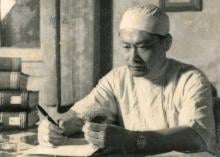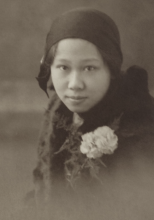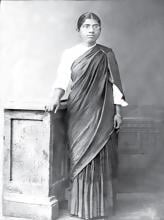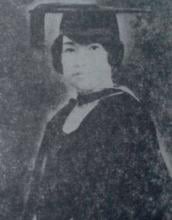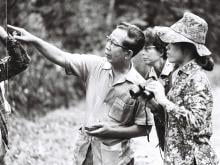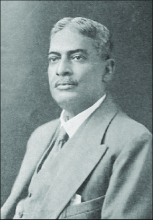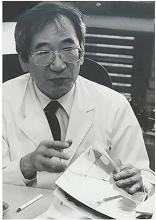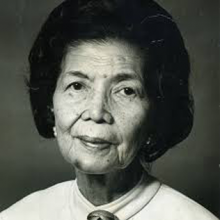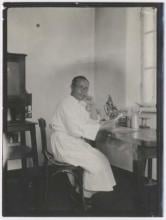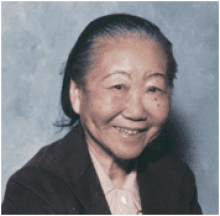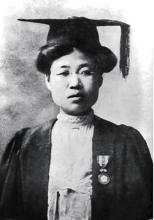Medicine
News

20 Feb 2006
‘MNCs exploiting..; No impact of on Bihar market, Govt alerts officials; Pandemic more likely; Cairo zoo closed; 1 life claimed; Indian style of cooking kills virus; Govt prepared; France on war footing; Germany deploys army island; 130 chickens dead in Qena, Egypt; Mr. Yukol affirms Thailand is under ...
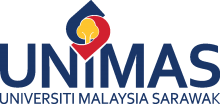
19 Feb 2006
Two scientific officer positions are available to work on a Wellcome Trust-funded 3-year research project on molecular epidemiological and population genetic studies on knowlesi malaria

19 Feb 2006
A new model that explains why cooling sometimes causes liquid molecules to
form disordered glasses rather than ordered crystals; The hunger-signaling gut hormone ghrelin can increase the number of nerve connections in a region of the brain crucial for the formation of new memories

17 Feb 2006
Albanian president touts measures against bird flu; CSL encouraged by small-dose vaccine test; EU launches more measures to fight bird flu; NIGER: Dead birds raise fears; Bird flu hits Slovenia, where in EU next?; Second Iraqi dies; Vietnam to restore poultry industry; US to test child vaccine; Avian influenza confirmed in swans in Hungary ...

16 Feb 2006
Bird flu 'could take 142m lives'; Russia reports new outbreak; UN official urges better strategy to combat bird flu; NIGERIA: International experts deploy to help check bird flu; Iraqi health minister declares alert in southern province; Virulent strain now in Germany; False reports lead to slaughter in Zambia; EU Confirmed Case in Hungary …

15 Feb 2006
Broken Genius: The rise and fall of William Shockley, Creator of the electronic age; Bones, Rocks & Stars: The science of when things happened; The Whole Story: Alternative medicine on trial?; Climate Change Begins at Home: Life on the two-way street of global warming; The Science of the Hitchhiker's Guide to the Galaxy

15 Feb 2006
Organ donation shortages cause 17 patients in need of transplantations to die each day in the US, while thousands of black market transplants take place due to voluntary sale of donor kidneys. Selling a human organ is illegal in the US and many other countries. Doctors EA and AL Friedman make the case for legalizing such transactions.

15 Feb 2006
Now you see it, now you don't; Monkey brains weigh up good and bad; Continental-scale river flow increases as plants sweat less; Near-Sun origin of iron meteorites; Bottom's up to gene control; Inbreeding prophylactic exposed; Ionic liquids are a gas; Uncoiling snake evolution; Invading cane toads make long-legged leap into new territory

15 Feb 2006
Bird flu fears ease for sick children; FACTBOX-Bird flu cases, precautions in Europe; Morocco steps up bird flu checks as migration begins; Romania finds bird flu in fowl near Black Sea port; Italian loses job over bird flu fear, kills family; Real risk of bird flu in Europe: UN; Poultry Farmers in Nigeria Battle Bird Flu …

12 Feb 2006
This discovery might help to explain why we learn tasks better if there are breaks in between repetitions, why hyperactivity might cause learning problems and why simply being awake but resting can help learning.

08 Feb 2006
Snow makes forests better carbon sponges; Sympatric speciation finally seen in action; Rusty revelations; A narrow shave for silicon; Hyperactive sperm undressed; Gamma glow in Milky Way's heart reveals cosmic ray battering;

08 Feb 2006
Possible 3rd Death in Iraq; Bulgaria says don't panic; Chinese less worried; Stocks fall after strain detection; HK bans backyard farms; Software to save lives; US,French Health Agencies Join Forces; Discovery of variations of virus challenging; Inspection in Indonesia; Situation in Iraq, Indonesia; EU-funded Research; TraceTracker Joins Fight;

07 Feb 2006
The Tragedy of the Tsunami of 26th December 2004; Health and Nutrition Status of Earthquake-affected Population in Pakistan

07 Feb 2006
HIV in Bangladesh-Current Scenario; Nutrition and HIV: Science vs Hyperbole- Where Is the Intersection?; Management of Severe Malnutrition in HIV-infected Children: Recent Review of Current Evidence; Nutrition and HIV Programming Framework-Evidence and Policy Implications

07 Feb 2006
Obesity in Childhood; Vaccines for the Prevention of Diarrhoea; Data for Decision-making; Environment and Health; Malnutrition and Response to Feeding; Infant and Young Child Feeding; Child Health; Severe Malnutrition in the Community; Optimizing Management of Diarrhoea and Anaemia; Combating Micronutrient Malnutrition; HIV Infection and Nutrition;

07 Feb 2006
DIARRHOEAL DISEASES III; MICRONUTRIENTS, VITAMINS, AND DIETARY INTAKE III; BREASTFEEDING AND INFANT HEALTH III; NUTRITIONAL PROBLEMS, GROWTH, AND DEVELOPMENT III; HEALTH POLICY AND OTHER CHILDHOOD PROBLEMS III

07 Feb 2006
In an article in Nature Reviews Genetics, published online this week, an expert lends a helping hand by listing the best online sites for genetic education that will help inform everyone from scientists to complete novices.

07 Feb 2006
More Budget Money Sought; A succesful fight; Flu kills fifth bird; WHO probes new Iraq cases; Nigeria 'has no bird flu'; US not ready; Bulgaria closes off lakes; Iraq finds outbreak; Russian Company Completes Vaccine Development; More vaccine for US; Avian Influenza Found in Hong Kong; New Laboratory Assay …; HHS and Institut Pasteur Partner …

06 Feb 2006
While the RRV-TV vaccine was safe and inmmunogenic within Bangladesh setting, its withdrawal by U.S. has impacted negatively the possible use of the vaccine in developing countries. Currently, only the HRV vaccine (RIX4414) is studied for safety and immunogenicity.

06 Feb 2006
Rotavirus is a leading cause of severe diarrhoea in infants. Currently, no specific therapy is available, although oral rehydration solution (ORS) has substantially reduced mortality from dehydration. Therefore, the development of cheap anti-viral products for the prevention or treatment of the disease is urgently needed.

06 Feb 2006
Based on screening data, 140 children from Avon would be expected to have coeliac disease. However, only 12 of these children have been diagnosed with coeliac disease. This suggests that 90% of children with possible coeliac disease may be being missed.

06 Feb 2006
DIARRHOEAL DISEASES II; MICRONUTRIENTS, VITAMINS, AND DIETARY INTAKE II; BREASTFEEDING AND INFANT HEALTH II; NUTRITIONAL PROBLEMS, GROWTH, AND DEVELOPMENT II; HEALTH POLICY AND OTHER CHILDHOOD PROBLEMS II

06 Feb 2006
Rotavirus Vaccine; Newborn Care; Coeliac Disease in Children; Obesity in the Developing World; Insights into Diarrhoea; Liver Diseases in Children; Liver Transplantation in the Developing World; Hepatitis C in Children; Inflammatory Bowel Disease in Asians; Community-based Care; Parasites, Diarrhoea, and Atopy; Health Systems for Better Childcare

06 Feb 2006
WHO teams in Iraq; New Zealanders well-informed risk; Bulgaria to supply Tamiflu; Indonesia's Confirmed Death Toll Increases to 16; WHO confirms Iraq bird flu death; Bird flu risk is high in Ukraine; Flu ruffles fear of chickens; Two More Children Released From Hospital; Getting ready for next pandemic; Disaster preparation just common sense

05 Feb 2006
Maternal under-nutrition and low birth-weight are highly prevalent in developing countries. Many countries have nutritional supplementation programmes during pregnancy to improve the situation. However, the impact of prenatal supplementations on infants’ developmental outcome has not been adequately studied.

05 Feb 2006
Breastfeeding practices have wide sociocultural connections and vary according to geographic regions. Published literature on breastfeeding initiation and exclusive breastfeeding is not available for urban population of western Nepal.

05 Feb 2006
An estimated 42,000 children are blind in Bangladesh, and 32% of them are blind from preventable causes, such as vitamin A deficiency mostly following diarrhoea and measles.

05 Feb 2006
Simple behavioural change interventions may reduce early hospital deaths among children admitted with severe malnutrition but do not reduce case fatality.

05 Feb 2006
Endoscopic nodular antritis in children is described to have a high correlation with Helicobater pylori infection.
The study was carried out to investigate the accuracy of using antral nodularity as a marker for H. pylori infection in children.

05 Feb 2006
Increasing antibiotic resistance has emerged as a major challenge in the treatment of shigellosis as multi-drug-resistant Shigellae are being increasingly reported. 47% of patients either did not respond or responded partially to fluoroquinolones. Due to indiscriminate use they will soon be ineffective in the region for treating shigellosis.
Researchers
Sorry, no researchers coming up for this topic.
- « first
- ‹ previous
- 1
- 2
- 3
- 4
Giants in history
Vietnamese surgeon Tôn Thất Tùng (10 May 1912 – 7 May 1982) developed a pioneering technique that reduced the risks and mortality rate of liver operations.
Michiaki Takahashi (17 February 1928 – 16 December 2013) was a Japanese virologist who developed the first chickenpox vaccine.
Irene Ayako Uchida’s (8 April 1917 – 30 July 2013) strides to understand genetic diseases such as Down syndrome paved the way for early screening of chromosomal abnormalities in foetuses.
Baron Kitasato Shibasaburo (29 January 1856 – 13 June 1931) was a Japanese physician and bacteriologist whose work led to a new understanding of preventing and treating tetanus, diphtheria and anthrax.
Maggie Lim (5 January 1913 – November 1995) was a Singaporean physician who promoted family planning and expanded the access to clinics to improve the quality of life for mothers and children in Singapore’s early days.
By isolating soil microorganisms and studying the compounds they produce, Satoshi Omura (born 1935) discovered almost 500 organic compounds with unique properties that were produced by these microorganisms, including many new antibiotics.
The founder of the Adyar Cancer Institute in India, Muthulakshmi Reddy (30 July 1886 – 22 July 1968), fought to uplift women and girls from impoverished situations.
Chinese-American virologist and molecular biologist Flossie Wong-Staal (27 August 1946 – 8 July 2020) was the first scientist to clone HIV and determine the function of its genes.
Maharani Chakravorty (1937 – 2015) was one of India’s earliest molecular biologists whose research paved the way for advances in the treatment of bacterial and viral infections.
Archana Sharma (16 February 1932 - 14 January 2008) conducted research into plant and human genetics that expanded the understanding of both botany and human health. In relation to botany, she uncovered the means by which asexually-reproducing plants evolve into new species.
The first Thai woman to receive a degree in medicine, Margaret Lin Xavier (29 May 1898 – 6 December 1932), is best remembered for her compassion towards her less privileged patients.
In 1915, pathologist Katsusaburo Yamagiwa and his research assistant Koichi Ichikawa became the first to prove that chronic exposure to chemicals can cause cancer.
In 1915, Koichi Ichikawa along with pathologist Katsusaburo Yamagiwa became the first to prove that chronic exposure to chemicals can cause cancer.
Husband and wife team, Kimishige (3 December 1925 – 6 July 2018) and Teruko Ishizaka (28 September 1926 – 4 June 2019) discovered the antibody class Immunoglobulin E (IgE) that triggers allergic reactions. They also discovered that IgE antibodies attach to white blood cells, known as mast cells, releasing histamine, which causes allergic reactions.
Husband and wife team, Kimishige (3 December 1925 – 6 July 2018) and Teruko Ishizaka (28 September 1926 – 4 June 2019) discovered the antibody class Immunoglobulin E (IgE) that triggers allergic reactions. They also discovered that IgE antibodies attach to white blood cells, known as mast cells, releasing histamine, which causes allergic reactions.
Japanese chemist Takamine Jokichi (3 November 1854 – 22 July 1922) founded the Tokyo Artificial Fertilizer Company, where he isolated a starch-digesting enzyme (named takadiastase) from the fungus Aspergillus oryzae.
Ground-breaking cancer researcher Kamal Jayasing Ranadive (8 November 1917 – 11 April 2001) advanced the understanding of the causes of leukaemia, breast cancer and oesophageal cancer through the use of animal models. She was also among the first to recognise how susceptibility to cancer is linked to tumour-causing interactions between hormones and viruses.
The research of Filipino pharmaceutical chemist Luz Oliveros-Belardo (3 November 1906 – 12 December 1999) focussed on essential oils and other chemicals derived from native Philippine plants.
Thai physician and conservationist Boonsong Lekagul (1907 – 1992) made major contributions to the preservation of his country’s wildlife.
Indian scientist and physician Upendranath Brahmachari (19 December 1873–6 February 1946) is best known for creating a drug called Urea Stibamine, used to safely and reliably treat visceral leishmaniasis (or Kala-azar), a severe infection caused by the Leishmania parasite.
Filipino chemist and pharmacist Manuel A. Zamora (29 March 1870 – 9 July 1929) is best remembered for his discovery of the tiki-tiki formula to combat beriberi, a disease caused by Vitamin B1 deficiency.
Korean parasitologist Seung-Yull Cho (16 November 1943 – 27 January 2019) is remembered largely for his pioneering works to control infections caused by helminthic parasites and his contribution to journal publishing.
Fe Villanueva del Mundo (27 November 1911 – 6 August 2011) was a Filipina paediatrician who founded the Philippines’ first paediatric hospital.
After witnessing death and suffering as a youth in his home village during World War II, Nguyễn Tài Thu (6 April 1931 – 14 February 2021) set his sights on alleviating pain by becoming a doctor. After studying Traditional Chinese Medicine in China in the 1950s, Thu returned to Vietnam to serve in military hospitals. Eventually, he became the country’s foremost practitioner of acupuncture, a technique he first learned by inserting needles into himself.
Minoru Shirota (April 23, 1899 – March 10, 1982) was a Japanese microbiologist who invented the popular fermented drink Yakult.
Wu Lien-teh (10 March 1879 – 21 January 1960) was a Malaysian-born doctor who invented a mask that effectively suppressed disease transmission. Winning the prestigious Queen’s Scholarship enabled Wu to become the first Chinese student to study medicine at the University of Cambridge.
David T. Wong (born 1936) is a Hong Kong-born American neuroscientist who is best known for discovering the antidepressant drug fluoxetine, better known as Prozac.
Indian organic chemist Asima Chatterjee (1917 to 2006) studied the medicinal properties of plant products, especially compounds known as vinca alkaloids.
Chika Kuroda (24 March 1884 – 8 November 1968) was a Japanese chemist whose research focussed on the structures of natural pigments.
Umetaro Suzuki (7 April 1874 – 20 September 1943) was a Japanese scientist best remembered for his research on beriberi, a disease caused by vitamin B1 deficiency, characterized by limb stiffness, paralysis and pain.
Salimuzzaman Siddiqui (19 October 1897 – 14 April 1994) was an artist and chemist from Pakistan whose research focused on natural products from plants.
Barry Paw (29 August 1962 – 28 December 2017) was a biologist and oncologist who discovered several novel genes and their functions in red blood cells.
Syed Qasim Mehdi (13 February 1941 – 28 September 2016) was a Pakistani molecular biologist who was a founding member of the Human Genome Diversity Project (HGDP), which assessed human diversity by studying human migration, mutation rates, relationships between different populations, genes involved in height and selective pressure.
Tsai-Fan Yu (1911 – 2 March 2007) was a Chinese-American physician and researcher who was the first female full professor at Mount Sinai School of Medicine. She discovered that gout, a condition characterized by the painful inflammation of joints, was caused by elevated levels of uric acid in the bloodstream.
Min Chueh Chang (10 October 1908 – 5 June 1991) was a Chinese-American biologist who studied fertilization in mammalian reproduction.
A Japanese surgeon, Tetsuzo Akutsu (20 August 1922 – 9 August 2007) built the first artificial heart capable of keeping an animal alive.
Ogino Ginko (3 March 1851 – 23 June 1913) was the first registered female doctor to practise modern medicine in Japan.
Esther Park (1877-1910), born Kim Jeom-dong, was the first female Korean physician to practise modern medicine in Korea and trained the first generation of Korean female doctors.


